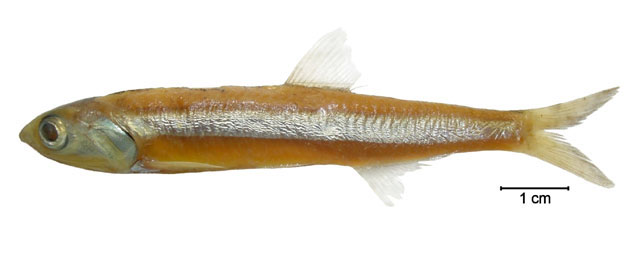| Engraulidae (Anchovies), subfamily: Engraulinae |
| 17 cm SL (male/unsexed); max.weight: 25.0 g |
|
pelagic-neritic; marine; depth range 30 - 200 m, oceanodromous |
| Southwest Atlantic: north of Rio de Janeiro, Brazil to San Jorge Gulf, Argentina. |
|
Dorsal spines (total): 0-0; Dorsal soft rays (total): 15-16; Anal spines: 0-0; Anal soft rays: 17-21. Snout prominent, pointed, about 3/4 eye diameter; maxilla moderate, tip bluntly tapering or a little rounded, reaching to front margin of pre-operculum, extending a little beyond tip of second supra-maxilla; teeth in jaws numerous, small. Lower gill rakers long and slender; no gill rakers on hind face of third epibranchial; pseudobranch long, reaching onto inner face of operculum (Ref.189). Blackish blue dorsally, silvery white laterally and ventrally. All fins transparent (Ref. 27363). |
| Occurs in coastal waters to about 800 km or more from the shore, forming dense schools at about 30 to 90 m depth in summer, but down to 100 to 200 m during winter. Feeds as juveniles on zooplankton, but with phytoplankton becoming increasingly important. Spawns throughout the year, most intensely and close to shore in October or November and again in May or June but less intensely and more offshore. Exhibits north-south and near shore-offshore migrations. During winter as the most favorable feeding period for larvae which occurs in the continental shelf in the extreme south of Brazil (Ref. 53892). Consumed fresh or canned (Ref. 4931).Typical size 7-13 cm SL (Ref. 47377). |
|
Least Concern (LC); Date assessed: 05 December 2019 Ref. (130435)
|
| harmless |
Source and more info: www.fishbase.org. For personal, classroom, and other internal use only. Not for publication.
